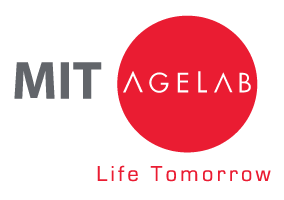Where Do Americans Want to Retire?

Source: Big City or Small Town? The Surprising Stats on Where Americans Want To Retire, GOBankingRates, 10/21/22. Most recent data available. GOBankingRates surveyed 997 Americans aged 18 and older from across the country between Aug. 9 and Aug. 11, 2022.
Other numbers become part of our retirement life as well. Blood pressure, good and bad cholesterol, body mass index, and other measures of physical health become part of our everyday concerns or at least conversations with our doctor. One health insurer ran ads stressing that you should “know your numbers.” In many ways, the numbers reflecting our health and wealth become the equivalent of SAT scores in older age. And like SAT scores, they are, at best, an incomplete approximation of our future.
Another number may be even more indicative of how you will live in older age: your zip code. Thanks to students in my MIT Global Aging & Built Environment class, we’ve been thinking a lot about the role of “place” in retirement. Where you live has an incredible impact and predictive power on how well you’ll live.
Place and well-being are a topic for many researchers, especially those who examine health disparities between income, race, and other groups. One study’s title poignantly frames the issue best with respect to health outcomes of mothers and children: “Why Your ZIP Code Matters More Than Your Genetic Code.”
A recent study conducted by researchers at New York University’s Grossman School of Medicine provides new insights into how place affects life expectancy. Factors such as access to quality food; the density of alcohol and tobacco outlets; walkability; parks and green space; housing characteristics; and air pollution all have some impact on life expectancy. This study, and many others, indicate that within the same metropolitan area, or even the same city or town, life expectancy and quality of life can differ widely. Sometimes only a few blocks can mean many more years of life.
Longevity Planning And Assessing The “Where” To Live In Older Age
While retirement planning remains focused on money, longevity planning requires thinking about financial security as well as overall quality of life across the lifespan—particularly in older age. How might we think about the “where” factor in older age?
Most of us think where we live now is where we’ll live in retirement. That is, we’ll age in place and stay put. However, as we age, our needs, desires, health conditions, social connections, and more will change. This can often create a disconnect between what’s working now and what will work later.
Others plan to move but have visions of retirement brochures dancing in their heads. These images portray retirement living as an endless vacation—a life stage filled with beaches, bicycles, and yes, pickleball. Retirement is likely to last a long time: For many people, it can be one-third of their adult life. Choosing where to live based on recreational interests or vacation memories alone may not support living well in older age for decades.
Here Are Some Questions to Consider and Discuss When Assessing the “Where” in Your Longevity Planning







